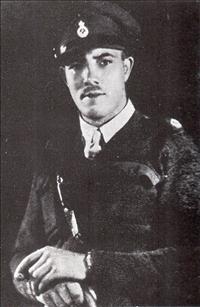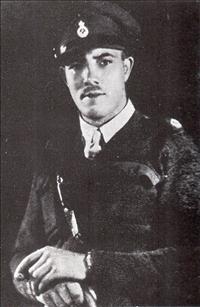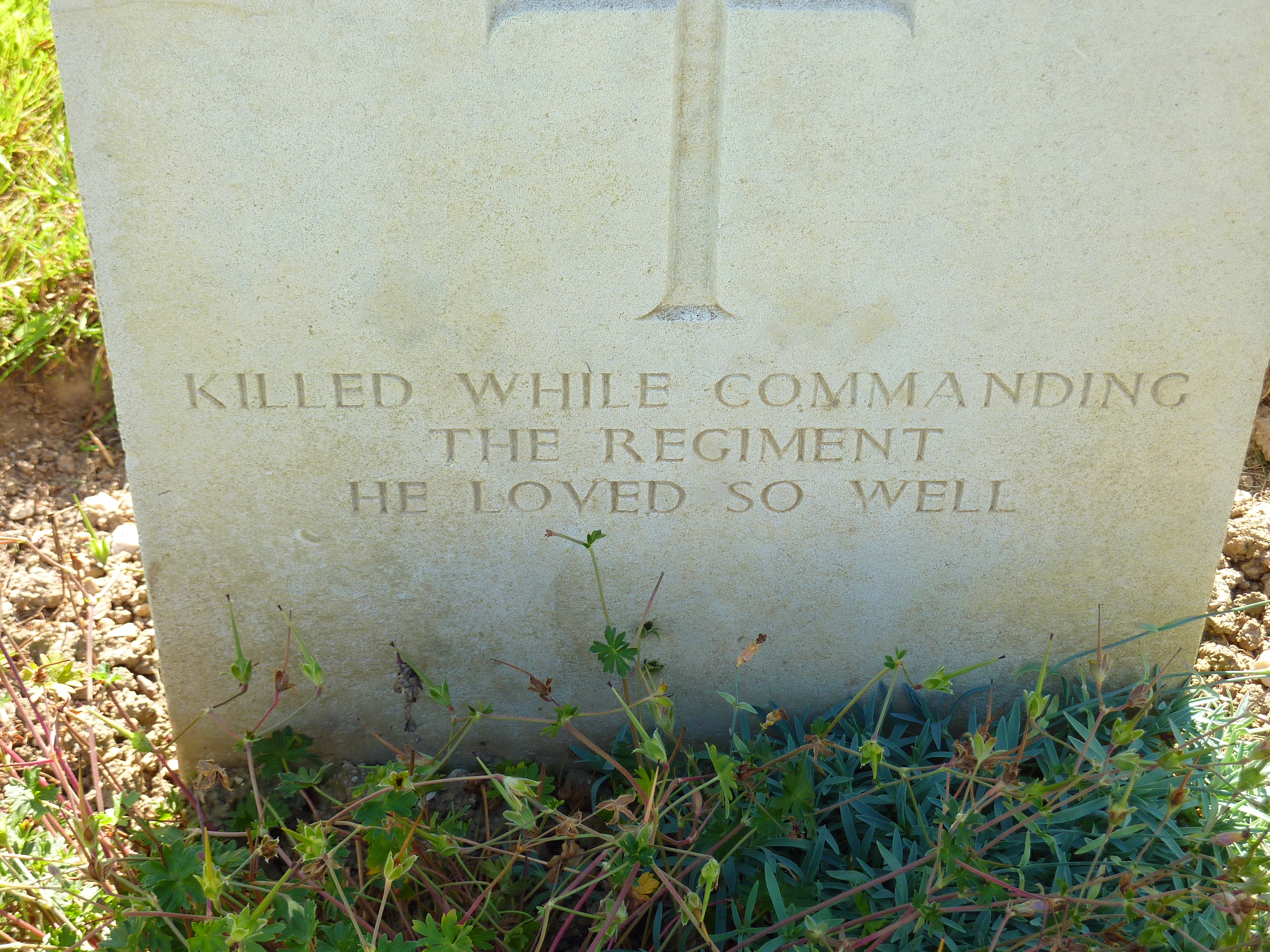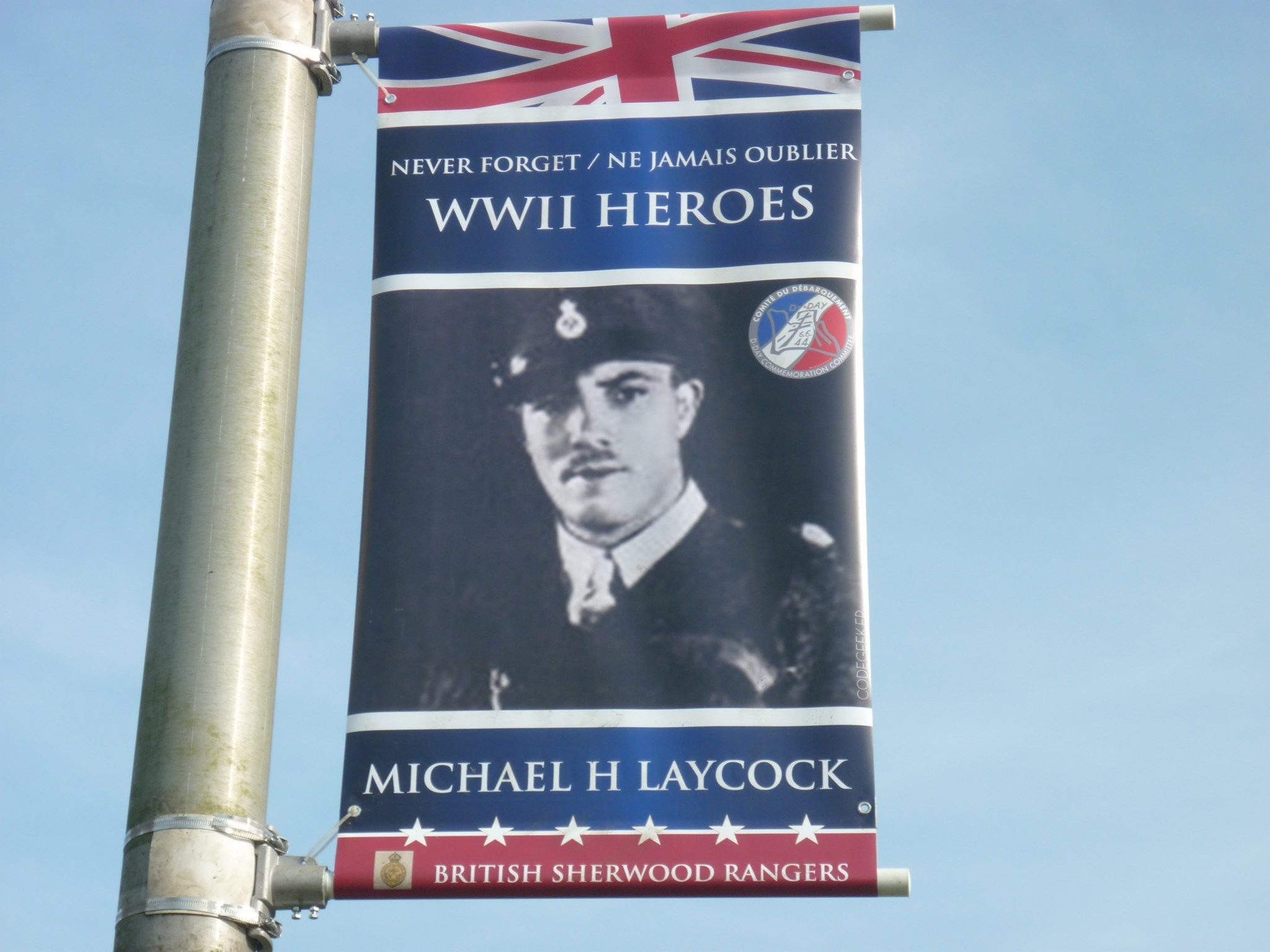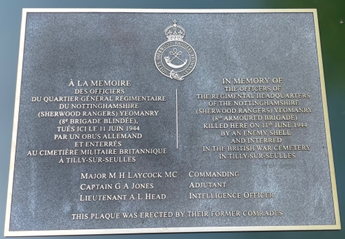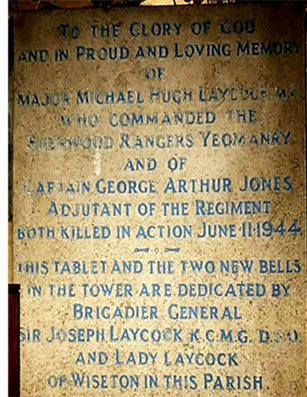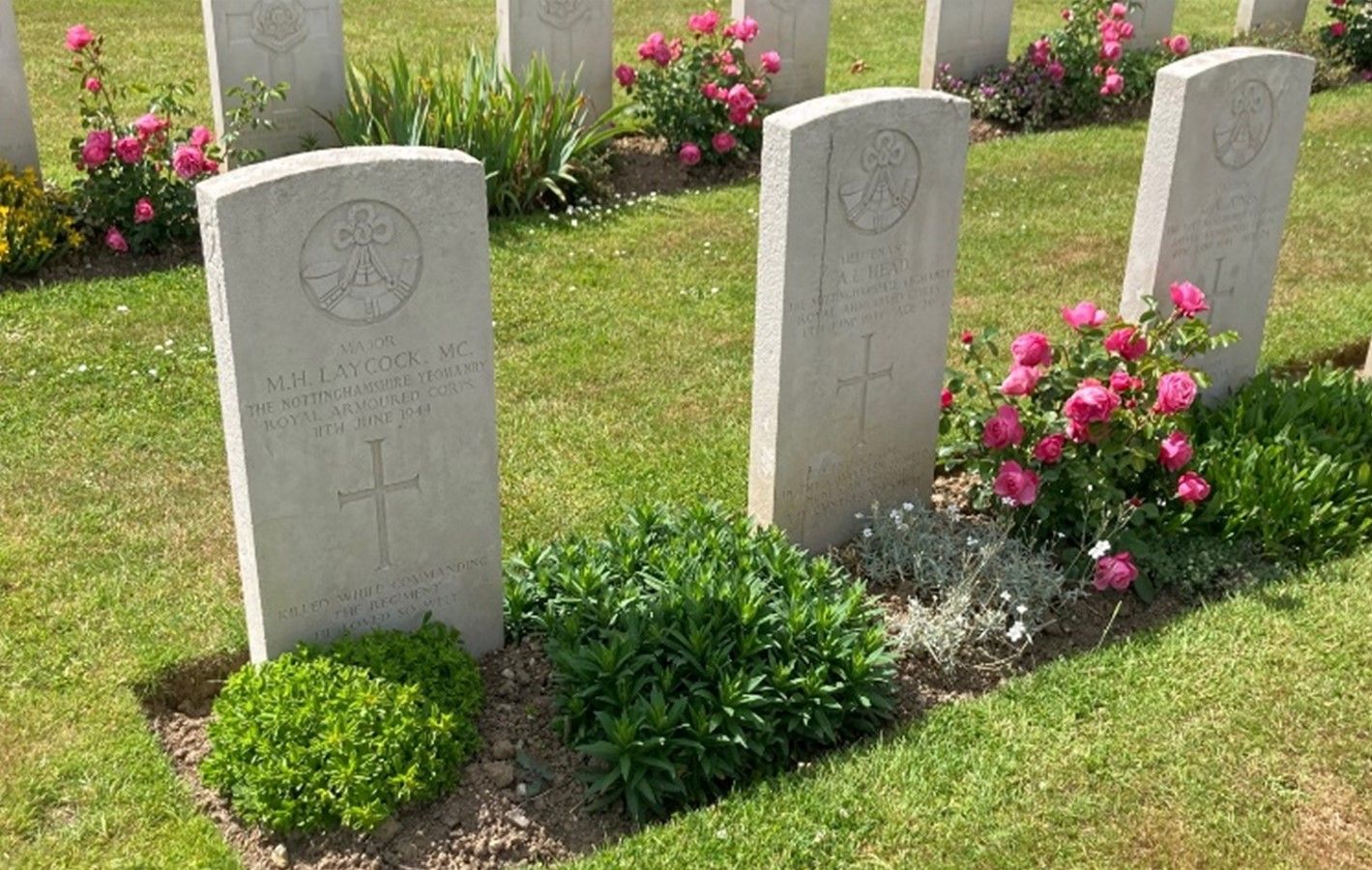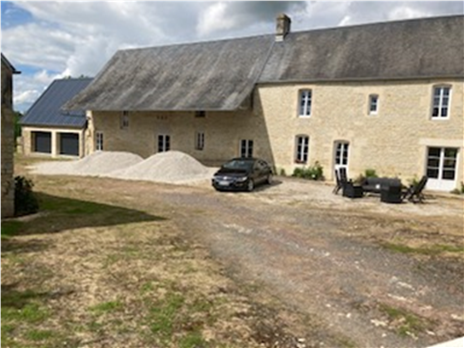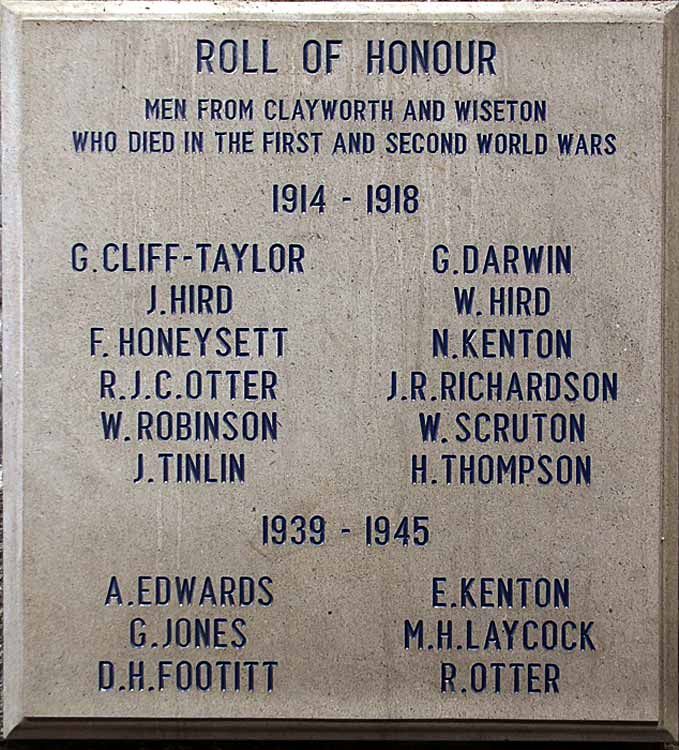Service Number: 63272
Regiment: Royal Armoured Corps Nottinghamshire Yeomanry
Awards: Military Cross
Died: 11th June 1944
Born at Wiseton on the 22nd August 1914, and baptised privately at St. Peter's Church, Clayworth on the 15th November, Michael was the son of Brigadier-General Sir Joseph Frederick Laycock, K.C.M.G., D.S.O., and Lady Katherine Mary "Kitty" Laycock (née Hare), of The Hall, Wiseton, Nottinghamshire. They had married on the 19th November 1902. His father had competed in Water Motorsport (speedboats) with Hugh Grosvenor, 2nd Duke of Westminster, in the 1908 Olympics. He was also at one time, a Deputy Lieutenant, Lord Lieutenant and, in 1906, High Sheriff of Nottinghamshire. Michael had two younger brothers Robert and Peter as well as four half-siblings.
Michael was educated at Lockers Park School in Hertfordshire from April 1924 – March 1927 where he sadly did not excel academically before going on to Eton College, Berkshire from September 1927 until July 1932. After leaving Eton, Michael studied to become a colliery manager and worked alongside the men at Seghill Colliery in Northumberland learning the job.
During the war he served in the Nottinghamshire Yeomanry (also known as the Sherwood Rangers). In 1942 he was in North Africa where his actions at Deir al Agram saw him awarded the Military Cross. It was the Regiment's first Military Cross of the war while in western Egypt. The award was announced in the London Gazette on the 5th November 1942.
The initial recommendation for the award stated:
"At DEIR el AGRAM on 1st September 1942, Major Laycock was leading his squadron against a prepared German anti-tank position when his tank was hit and burst into flames. He evacuated the crews who were still alive and jumped into another tank which was then hit and likely also to go on fire. At the same time, the Regiment was ordered to withdraw. Major Laycock reformed his squadron, jumped out of his tank under intense fire from all arms, extinguished the flames and by his gallant action, saved the second tank and then led his squadron out of the action in good order. This officer's conduct throughout the action set the highest example to all ranks of coolness, courage and devotion to duty"
On D-Day the 6th June 1944, the Regiment landed on Gold Beach at 07.20hrs then advanced south
as part of the encirclement of the city of Caen. With the loss of the previous commanding officer, (Colonel John Anderson had been wounded on D-Day), Michael took over command of the Regiment in a temporary role. Arriving at Tilly on the 11th June 1944, he was ordered to attack the nearby village of Cristot. It seems they were observed by a German Op nearby and they were then shelled from Cristot. Michael's tank (nicknamed "Robin Hood received a direct hit from a 105mm shell. Michael was killed along with Lieutenant Lawrence Head (Intelligence Officer) and Captain George Jones (Adjutant). Captain George Jones also hailed from Wiseton and was the son of the groundsman on the Laycock estate. He and Mike were firm friends. All three men were buried side by side in Tilly-sur-Seules War Cemetery.
In June 1922 a plaque was unveiled at Tillysur-Seules commemorating these three Officers.
Michael is also commemorated by a memorial in the church of St Peter and St Paul, Gringley on the Hill, High Street, Bassetlaw and by a memorial in the church at Clayworth.
A fellow soldier and friend to Michael wrote:
At midday, I was told that "Robin Hood", the Commanding Officer's tank had received a direct hit from a heavy shell which had instantly killed Major Michael Laycock … this indeed was a shattering blow. Michael had joined the regiment as a Yeomanry officer soon after leaving Eton and so often he had told me that his great ambition was to command the Regiment in which his father had served, both in the Boer and the 1914-18 wars. No doubt his ambition would have been fulfilled had he lived. Having served with him since I joined the Regiment in 1939, I can claim to have been one of his best friends in the Regiment. His manner was abrupt and sometimes rude, and his temper, which he often lost, was fiendish and this, with his dark and swarthy complexion caused him to be nicknamed "Black Michael" by the men in the Regiment. But beneath this superficial exterior, he had a great, kind heart and a simple, serious and most lovable nature. He had the courage of a lion and would never issue an unpleasant order in battle that he himself would not be prepared to carry out. His family, knowing our friendship and my great regard for Michael, kindly sent me his wristwatch which I wear today and shall treasure always"
The Regimental History records state:
'To fall while commanding the Regiment was the death Michael Laycock would have chosen. His whole heart was with the Sherwood Rangers. '
Michael's two brothers Peter and Robert also served in the Army, Peter serving in the Sherwood Rangers and Robert in the Commandos. Robert Laycock would become Major General Sir Robert Laycock and a Governor of Malta.
(Sources: CWGC, Ancestry, Find My Past, Find a Grave Contributor: CJM (51355127), Newspaper Archives, Wikipedia, Facebook, The Notts Sherwood Rangers Yeomanry 1939-1946, National Archives)
(Bio: Woose)
Service Number: 63272
Regiment: Royal Armoured Corps Nottinghamshire Yeomanry
Awards: Military Cross
Died: 11th June 1944
Born at Wiseton on the 22nd August 1914, and baptised privately at St. Peter's Church, Clayworth on the 15th November, Michael was the son of Brigadier-General Sir Joseph Frederick Laycock, K.C.M.G., D.S.O., and Lady Katherine Mary "Kitty" Laycock (née Hare), of The Hall, Wiseton, Nottinghamshire. They had married on the 19th November 1902. His father had competed in Water Motorsport (speedboats) with Hugh Grosvenor, 2nd Duke of Westminster, in the 1908 Olympics. He was also at one time, a Deputy Lieutenant, Lord Lieutenant and, in 1906, High Sheriff of Nottinghamshire. Michael had two younger brothers Robert and Peter as well as four half-siblings.
Michael was educated at Lockers Park School in Hertfordshire from April 1924 – March 1927 where he sadly did not excel academically before going on to Eton College, Berkshire from September 1927 until July 1932. After leaving Eton, Michael studied to become a colliery manager and worked alongside the men at Seghill Colliery in Northumberland learning the job.
During the war he served in the Nottinghamshire Yeomanry (also known as the Sherwood Rangers). In 1942 he was in North Africa where his actions at Deir al Agram saw him awarded the Military Cross. It was the Regiment's first Military Cross of the war while in western Egypt. The award was announced in the London Gazette on the 5th November 1942.
The initial recommendation for the award stated:
"At DEIR el AGRAM on 1st September 1942, Major Laycock was leading his squadron against a prepared German anti-tank position when his tank was hit and burst into flames. He evacuated the crews who were still alive and jumped into another tank which was then hit and likely also to go on fire. At the same time, the Regiment was ordered to withdraw. Major Laycock reformed his squadron, jumped out of his tank under intense fire from all arms, extinguished the flames and by his gallant action, saved the second tank and then led his squadron out of the action in good order. This officer's conduct throughout the action set the highest example to all ranks of coolness, courage and devotion to duty"
On D-Day the 6th June 1944, the Regiment landed on Gold Beach at 07.20hrs then advanced south
as part of the encirclement of the city of Caen. With the loss of the previous commanding officer, (Colonel John Anderson had been wounded on D-Day), Michael took over command of the Regiment in a temporary role. Arriving at Tilly on the 11th June 1944, he was ordered to attack the nearby village of Cristot. It seems they were observed by a German Op nearby and they were then shelled from Cristot. Michael's tank (nicknamed "Robin Hood received a direct hit from a 105mm shell. Michael was killed along with Lieutenant Lawrence Head (Intelligence Officer) and Captain George Jones (Adjutant). Captain George Jones also hailed from Wiseton and was the son of the groundsman on the Laycock estate. He and Mike were firm friends. All three men were buried side by side in Tilly-sur-Seules War Cemetery.
In June 1922 a plaque was unveiled at Tillysur-Seules commemorating these three Officers.
Michael is also commemorated by a memorial in the church of St Peter and St Paul, Gringley on the Hill, High Street, Bassetlaw and by a memorial in the church at Clayworth.
A fellow soldier and friend to Michael wrote:
At midday, I was told that "Robin Hood", the Commanding Officer's tank had received a direct hit from a heavy shell which had instantly killed Major Michael Laycock … this indeed was a shattering blow. Michael had joined the regiment as a Yeomanry officer soon after leaving Eton and so often he had told me that his great ambition was to command the Regiment in which his father had served, both in the Boer and the 1914-18 wars. No doubt his ambition would have been fulfilled had he lived. Having served with him since I joined the Regiment in 1939, I can claim to have been one of his best friends in the Regiment. His manner was abrupt and sometimes rude, and his temper, which he often lost, was fiendish and this, with his dark and swarthy complexion caused him to be nicknamed "Black Michael" by the men in the Regiment. But beneath this superficial exterior, he had a great, kind heart and a simple, serious and most lovable nature. He had the courage of a lion and would never issue an unpleasant order in battle that he himself would not be prepared to carry out. His family, knowing our friendship and my great regard for Michael, kindly sent me his wristwatch which I wear today and shall treasure always"
The Regimental History records state:
'To fall while commanding the Regiment was the death Michael Laycock would have chosen. His whole heart was with the Sherwood Rangers. '
Michael's two brothers Peter and Robert also served in the Army, Peter serving in the Sherwood Rangers and Robert in the Commandos. Robert Laycock would become Major General Sir Robert Laycock and a Governor of Malta.
(Sources: CWGC, Ancestry, Find My Past, Find a Grave Contributor: CJM (51355127), Newspaper Archives, Wikipedia, Facebook, The Notts Sherwood Rangers Yeomanry 1939-1946, National Archives)
(Bio: Woose)
Inscription
KILLED WHILE COMMANDING
THE REGIMENT
HE LOVED SO WELL
Family Members
Sponsored by Ancestry
Advertisement
Explore more
Sponsored by Ancestry
Advertisement
